Art, architecture and plastic bricks at Lego House: 'It's as if the National Gallery set up easels and paints next to the masterpieces and invited you try your hand at creating a Van Gogh'
The rural Danish town where Lego was created is dominated by the iconic toy — and at Lego House, it has a fittingly joyful site of pilgrimage. Toby Keel paid a visit.
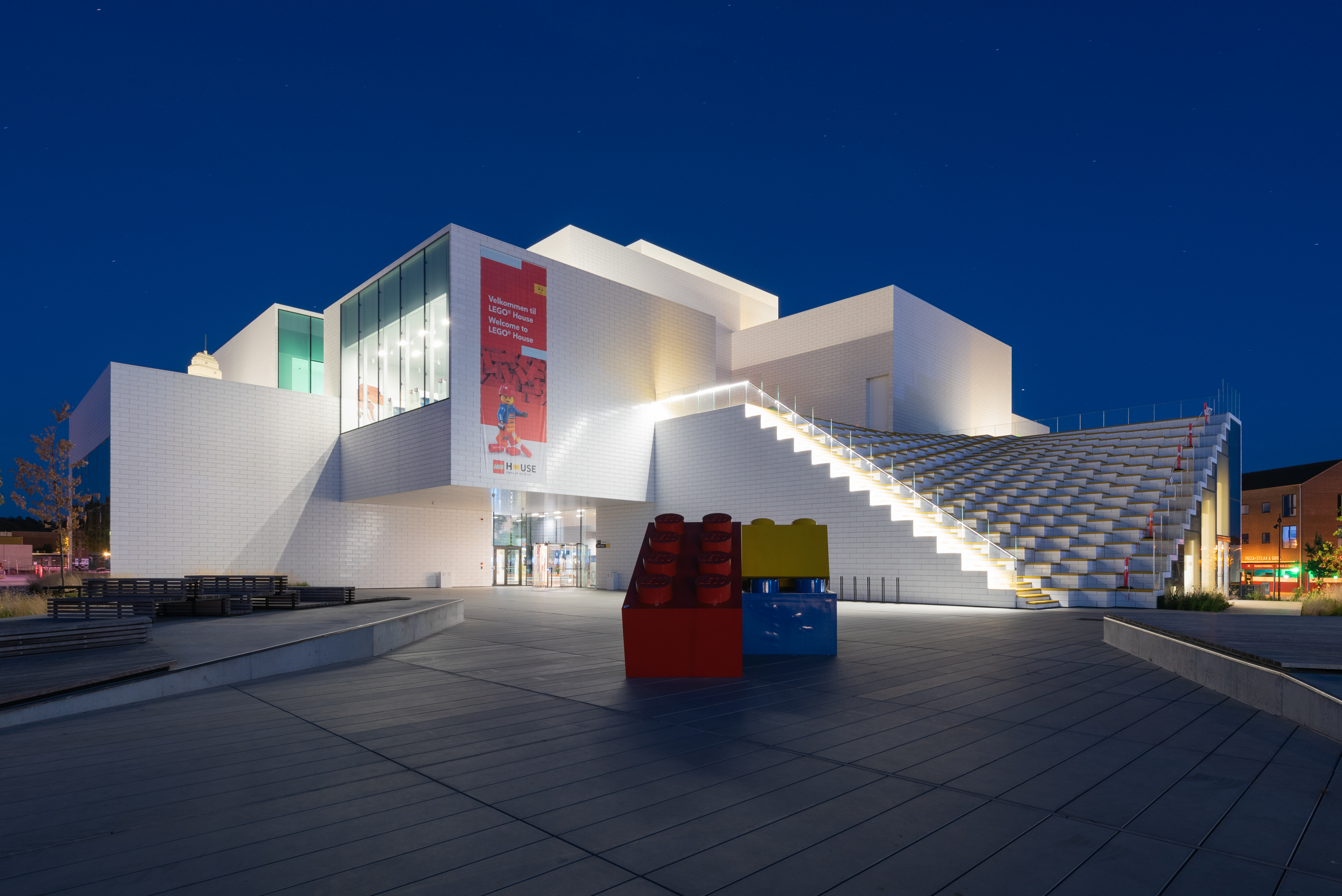
‘Ah, you here to go to Lego House? My daughter works at Lego. She designs sets!’
For a moment, it seemed an uncanny coincidence, when coming to Denmark on a Lego-themed trip. What are the chances of the taxi driver who happens to pick up your fare – a thickly-accented but charmingly chatty Moroccan immigrant – having a family member who works at Lego? But it was no coincidence at all. Billund, a few hours east of Copenhagen, is Lego Town.
It’s a place that eats, sleeps and breathes the stuff: a giant Lego castle here, a 30ft-high Lego mini-figure there, even Lego-themed exercise apparatus in the Lego-themed gardens that sit in front of an anonymous office block where, naturally enough, they work on Lego. In retrospect it would have been harder not to bump in to someone directly connected to the ubiquitous plastic brick. This a company town through and through.
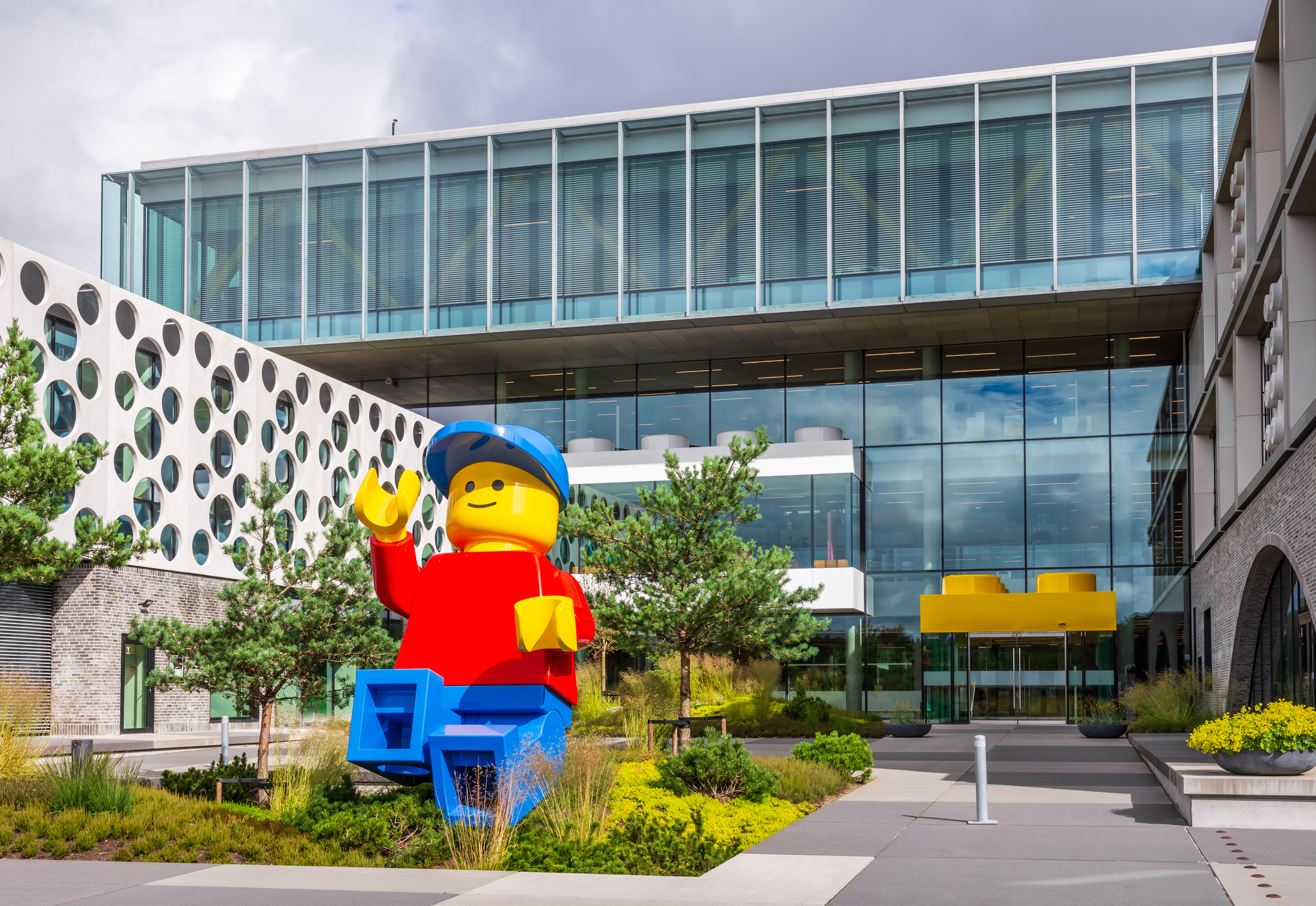
Lego's HQ looks exactly as you'd hope it would.
Perhaps even more than a town, when you start to analyse it. At the start of the 20th century, Billund was a tiny collection of farms in a forgotten part of Jutland, but the success of its most famous business has transformed this rural village, brick by plastic brick, Today, the town that Lego built is more like a Lego-themed country in miniature, with all the apparatus of an appropriately miniaturised nation state. There’s the government and civil service, in the form of Lego’s global headquarters (the building with the aforementioned giant Lego figure standing in front of it, like one of those giant statues of Buddha you see in pictures of the Far East). There are residential areas, with a string of themed Lego-themed hotels. There’s the recreation space, in the shape of Denmark’s Legoland (the original Legoland, before its equivalents in England, Japan and Dubai and the rest of them). And then there’s the building that is the cathedral, the palace and the university rolled in to one: Lego House.
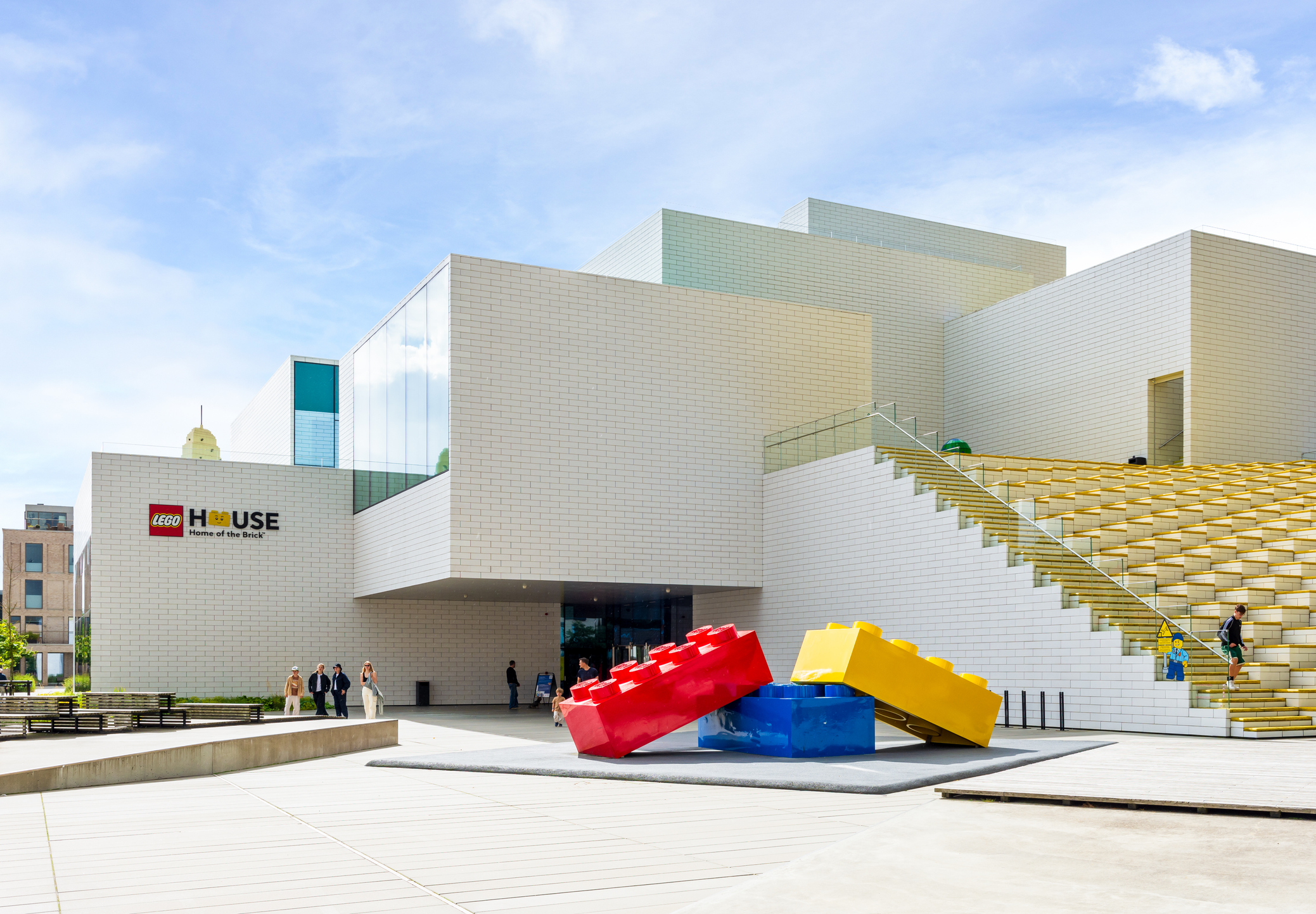
The award-winning architecture of Lego House is clean, simple and deceptively clever.
You see Lego House long before you get there. It looms large amid the low-rise buildings of Billund, like a blocky, white pyramid built of oversized Duplo bricks peeping out above the low-rise buildings that form most of the town. Opened in the autumn of 2017, it is both deceptively simple and astonishingly clever in terms of its architecture: this cavernous, 130,000sq ft building (roughly the size of a modest department store) has no pillars at all on the ground level. Instead, the award-winning architectural design specified that the various upper levels are suspended from what is effectively a steel bridge. The effect is to create something that has wide open feel of a major cathedral or an aircraft hangar, yet with huge glass windows and bright white walls it feels light and futuristic.
Your eyes won’t linger long on such things, however. Instead, you’ll notice three other things.
First is the people: this building was conceived by architects Bjarke Ingels Group as not just an experience, but a public forum and a thoroughfare in the centre of the town, on the site of what was once the main city hall building.
Exquisite houses, the beauty of Nature, and how to get the most from your life, straight to your inbox.
Second, you’ll notice the life-sized Lego people: plastic passers-by, facsimile families, and a father playing with his son on one of the benches. There's even, brilliantly, a Lego dog spraying Lego urine onto a Lego lamp post.
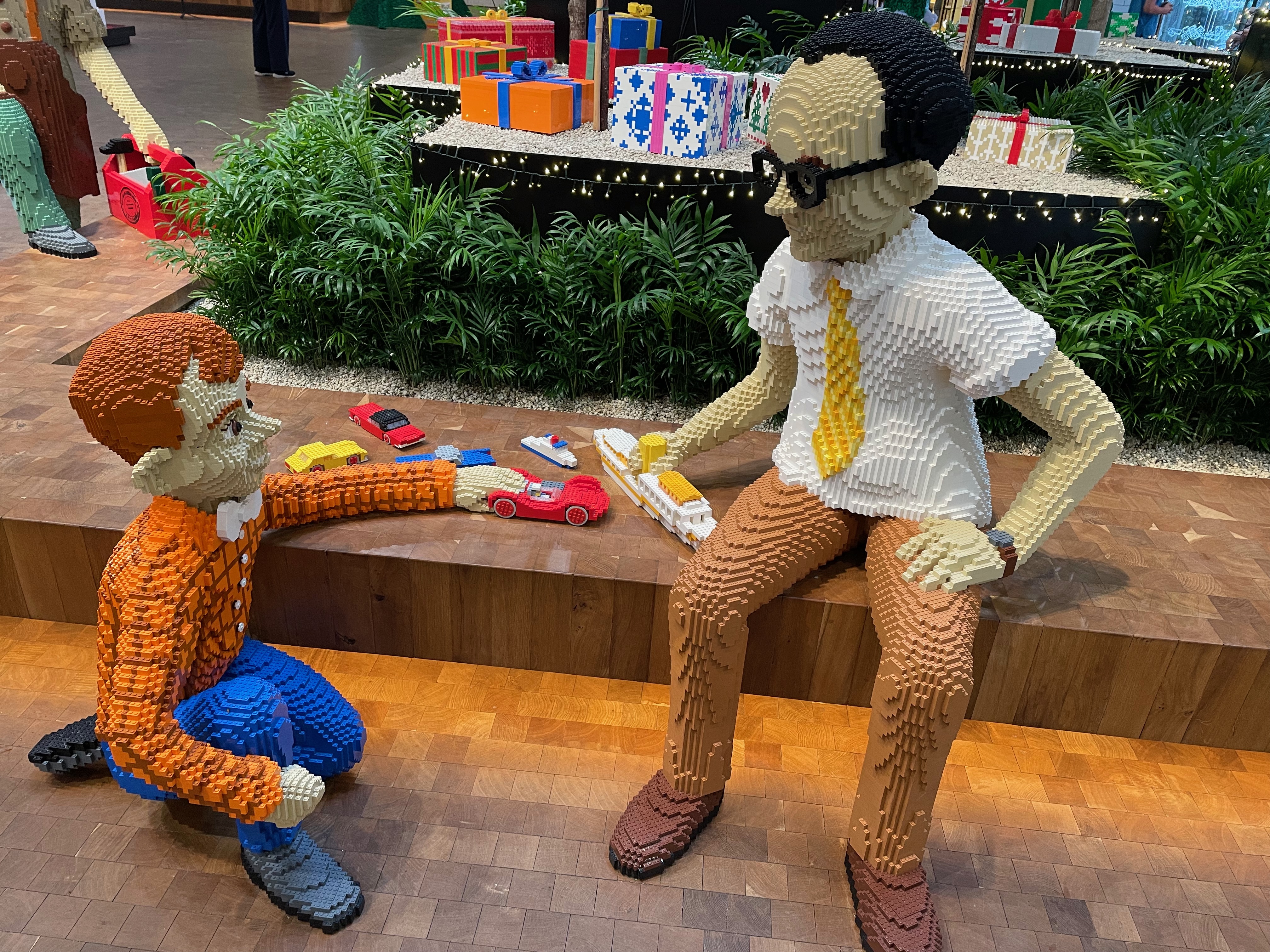
Nostalgia piled on nostalgia.
And finally, as you head towards the exhibits that lie within, you’ll notice a tree: the Lego Tree of Creativity. 50ft high, and made of over six million Lego bricks, it’s a breathtaking feat of plastic engineering — and strong enough that you could climb it.
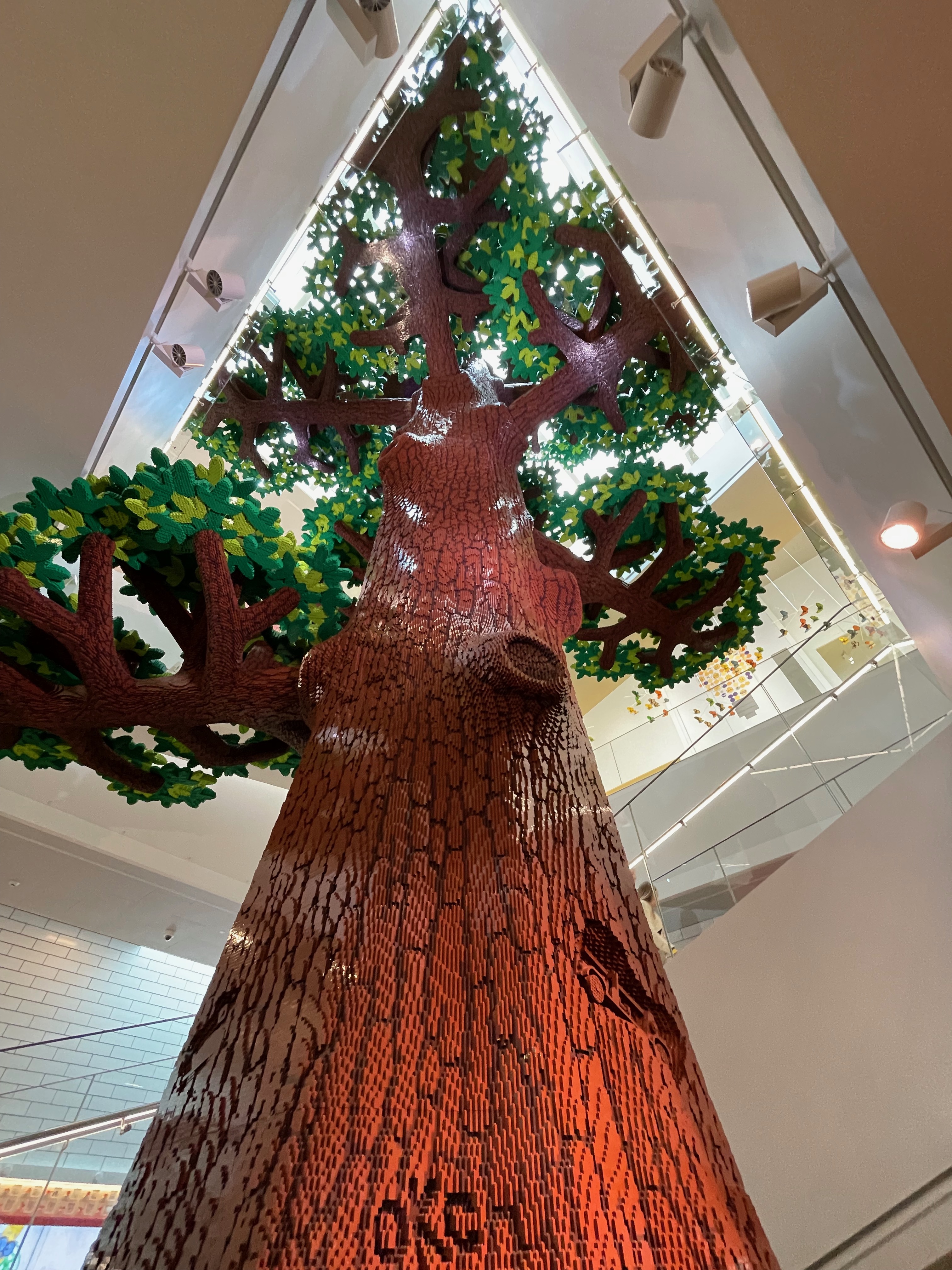
Every few months, two of Lego House's employees are tasked with abseiling down the 50ft Tree of Creativity to give it a decent dusting.
Pass through the turnstiles and you’ll begin to work your way up from its base, via a staircase that weaves its way around the tree to the top of the building. It's something of a time machine: at the bottom you'll spot the initials OKC — for Lego’s founder, Ole Kirk Cristiansen — ‘carved’ into the plastic bark. As you climb you’ll see Lego toys from across the history of the company perching on each of the branches, starting from carved wooden ducks (Kristiansen's original design from 1932) through to the 1980s sets I remember as a kid, and right up to the most modern sets that my own children now play with. It whets your appetite for what comes next.
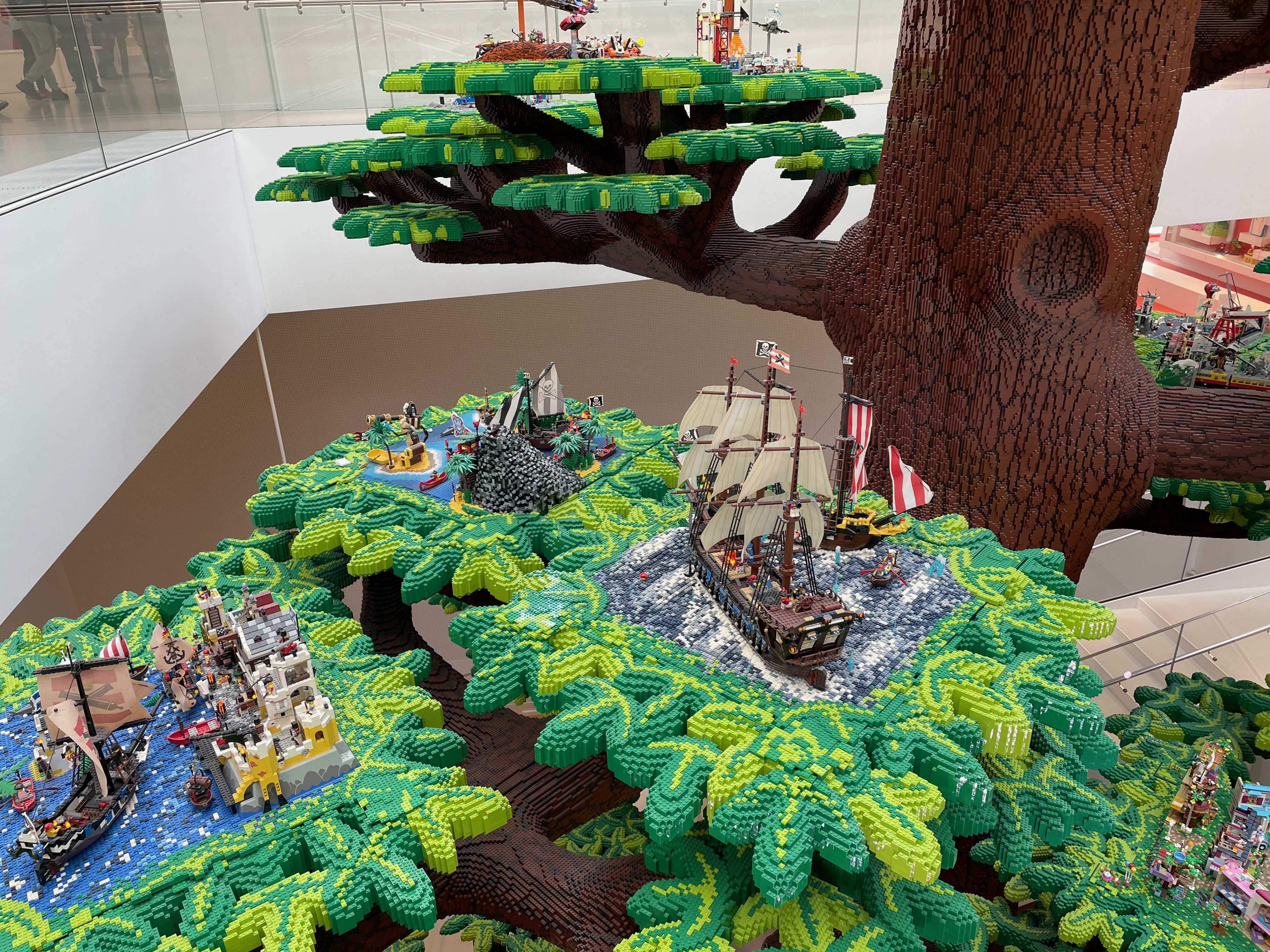
Ships ahoy.
And what does come next? A string of galleries and displays that are complemented everywhere you look with hands-on experiences. There are four colour-coordinated zones with vague themes (creative play in the red zone, experimentation in blue, video and image creation using Lego in the yellow zone, and quirky imagination in the yellow zone), but it never feels as if you're following a set route, or being told what to do and where to go. Just like the instructions in a real-life Lego set, the curation of Lego House is only ever a starting point.

All you need is love. And Lego.
There are some more formal displays — a ‘masterpiece’ gallery of incredible builds from 'AFOLs’ (adult fans of Lego, apparently), and a Lego museum — but they’re tucked away on the top floor and in the basement. Don’t miss either (particularly the basement museum, if you still remember the sets you grew up with) but they feel very much like the side dishes.

When plastic dinosaurs ruled the Earth.
What Lego House offers instead of structure is pure joy and creativity. The Legoland theme parks we've visited have been lovely in their way, but they lean on themed rides and actors dressed up in giant character suits. Lego House is the opposite: it’s a place where you do, not just see.
You’ll see breathtaking Lego sculptures created by talented artists everywhere you look: a dinosaur towers above you over here, a dozen square metres of stupendously detailed Alpine scene there, and so on. But they all sit amid giant hoppers full of bricks everywhere you look, inspiring you to have a go for yourself. It’s like turning up at the National Gallery and finding that they’ve set up easels and tubes of oil paint in the hallowed halls, encouraging you to have a bash at creating your own Van Gogh or Frans Hals.
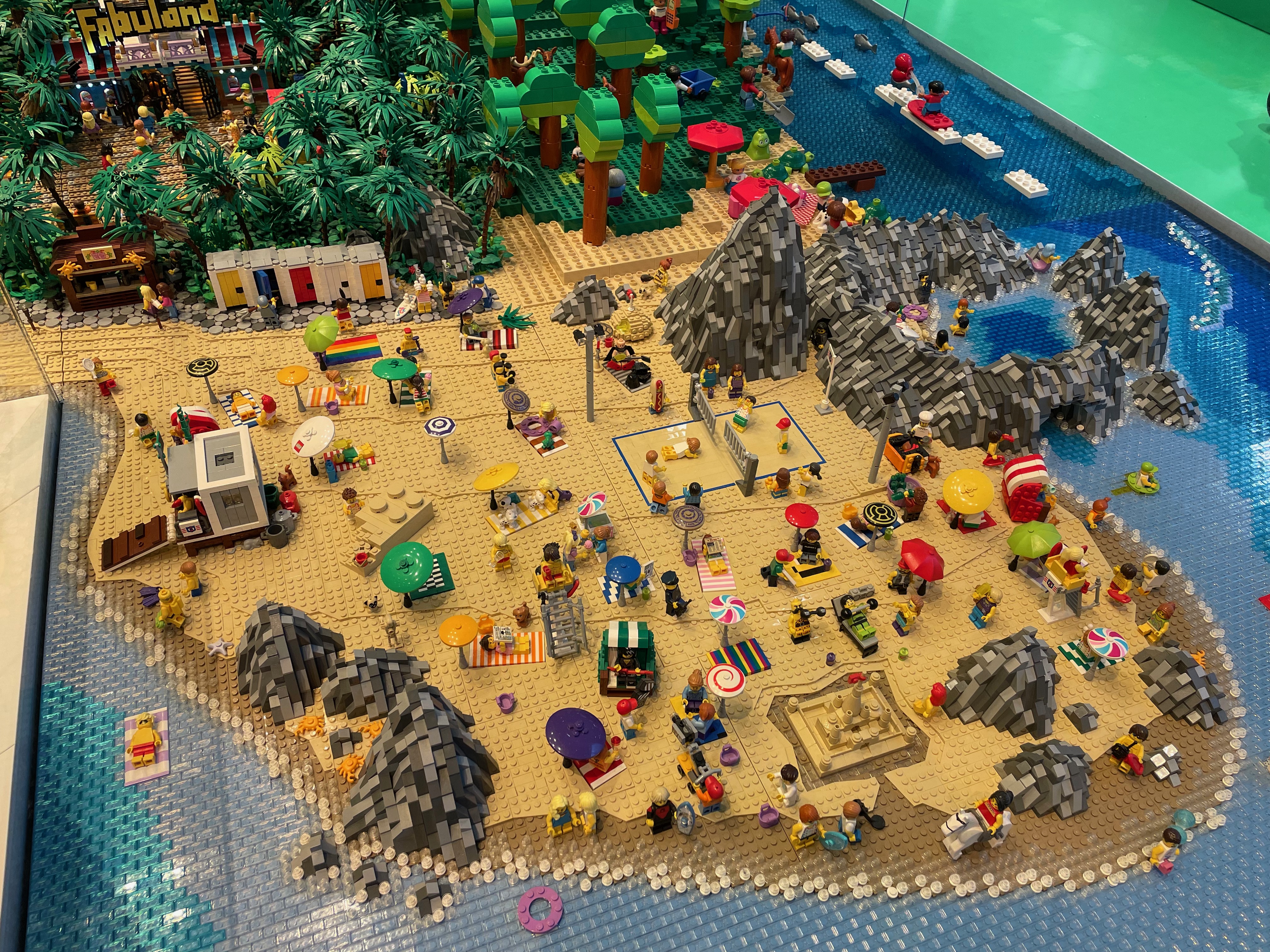
The detail in some of the fixed displays is wonderfully inventive and witty.
The joy of the place is in discovering its secrets, but an example to give you a flavour is the section concentrating on the classic 4x2 Lego brick, the simplest and most common of the thousands of designs the company produces. Mathematicians have worked out that if you take just six of these bricks, you can be put them together in any one of over 915 million different combinations — truly mind-boggling, but you're not just given that factoid to ponder on. Instead, you wander round the corner and come face-to-face with a machine pulled from the floor of one of Lego’s factories, and all set to make a constant stream of 4x2 bricks which are moulded, cooled, finished and bagged up before your eyes, before you get to keep them for yourself. And then, a nearby computer scans your entry wristband, allocating you (and naming after you) one of the 915 million possible combinations, then challenging you to build it. At some point in the future they’ll run out of un-claimed combinations; until then, it’s a bit like a Lego version of having a star named after you.

The author's 1 in 915,000,000 combination.
Lego House, in short, is a place of joy, I don’t care how cynical you are about the commercialisation of children’s toys, the moment you walk in and see that tree of six million bricks, you'll feel like a kid again. Even the catering is delightful: the food itself is not memorable, but I can guarantee you won’t forget visiting a restaurant where food must be ordered by clicking together Lego shapes, and is subsequently dished up by Lego robots.
Over the course of the few days we spent in Billund, we did discover that there is more to the town than Lego. There’s a sculpture park, a teddy bear museum, nature areas and a water park, and it’s all entirely family friendly (the town now bills itself as 'The Capital of Children’). But the heart that beats within Billund is made of Lego — and Lego House is the place where you’ll truly feel what that means.
Lego House is open all year. Entry to the displays costs between £20-£35 depending on age, season and size of group. See legohouse.com for more details.
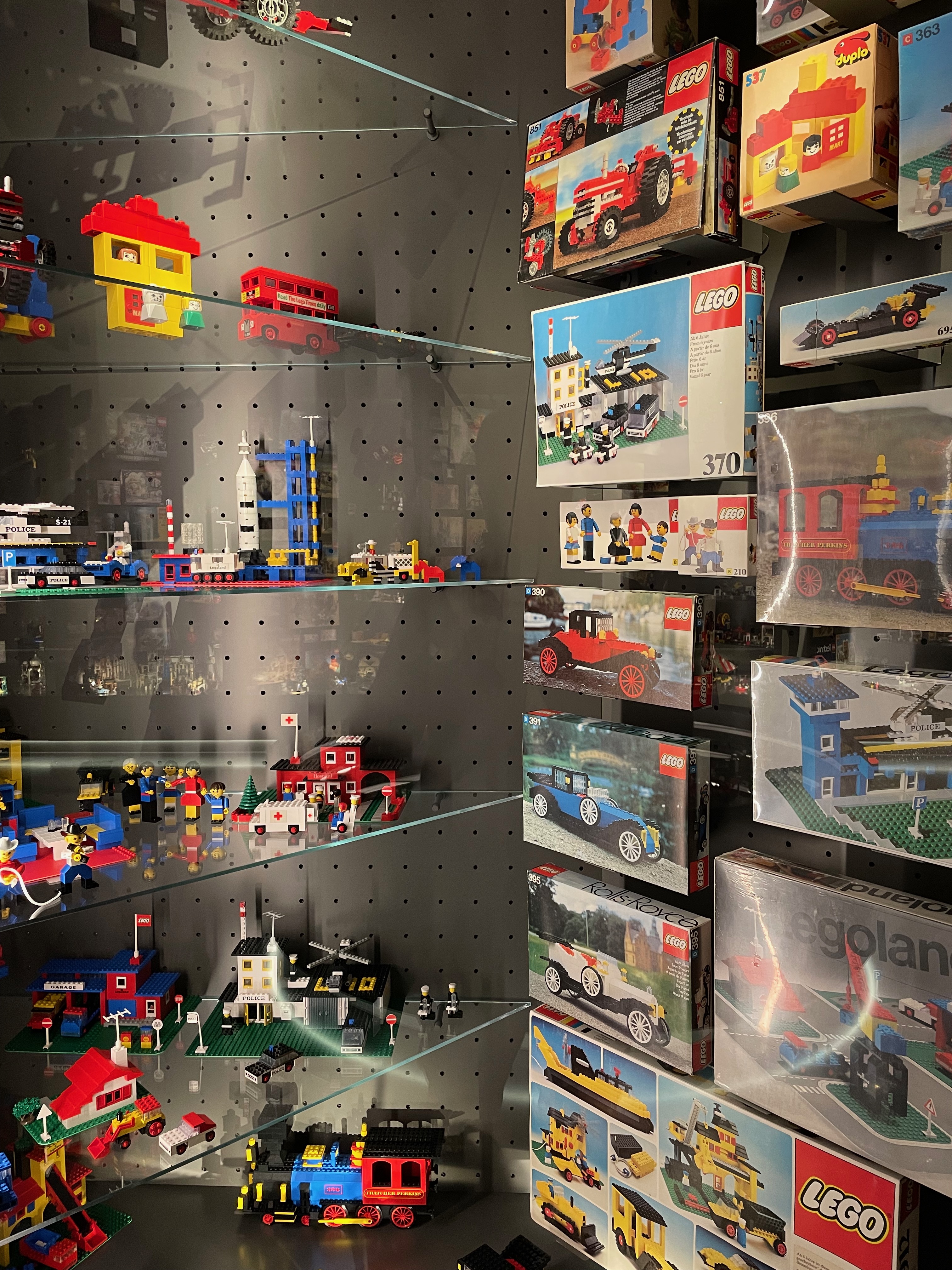
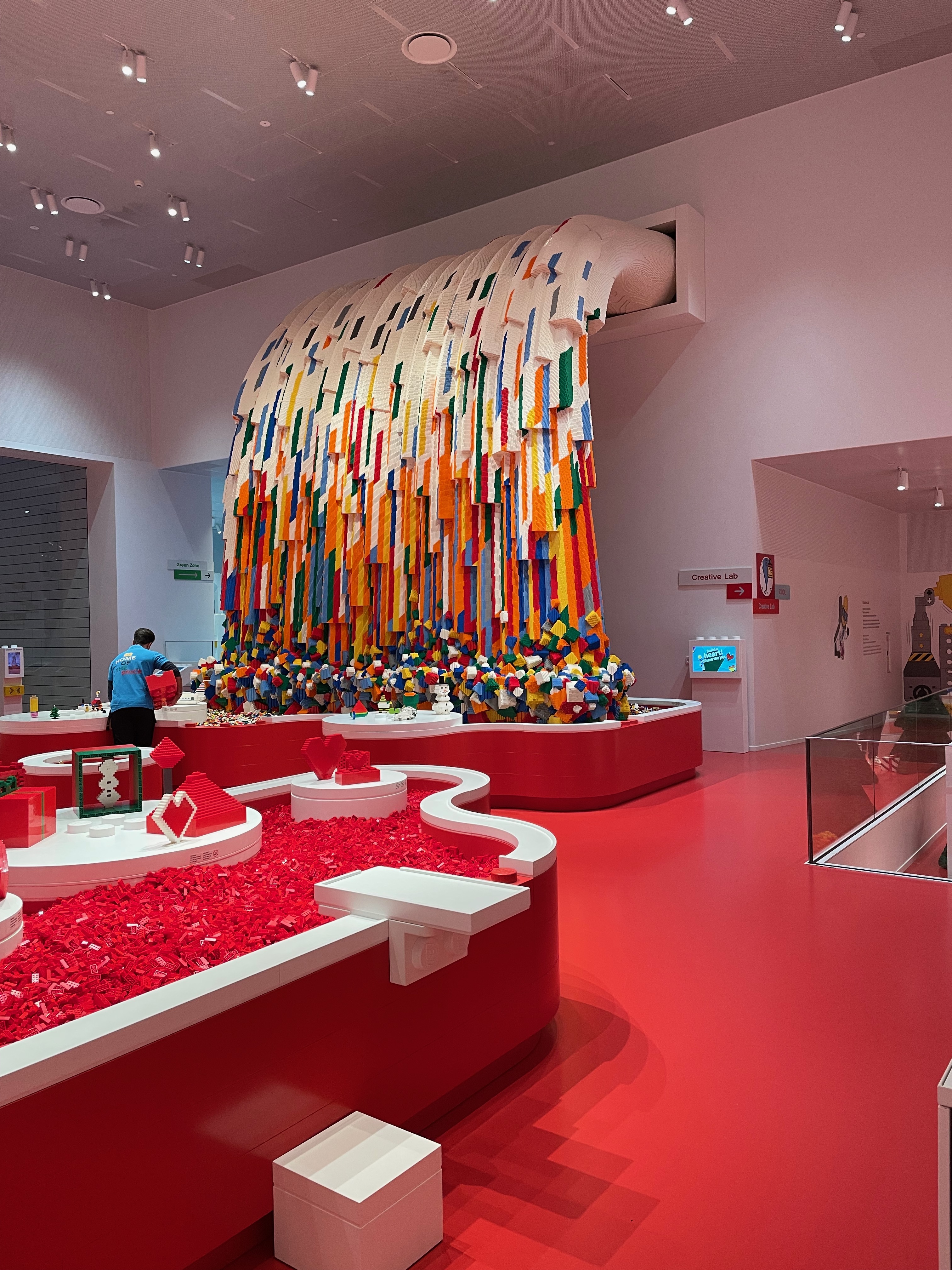

Toby Keel is Country Life's Digital Director, and has been running the website and social media channels since 2016. A former sports journalist, he writes about property, cars, lifestyle, travel, nature.
-
 There are a billion microbes in a teaspoon of soil. Letting the leaves to Nature feeds and nourishes them... and blasting them with a leaf blower is disastrous
There are a billion microbes in a teaspoon of soil. Letting the leaves to Nature feeds and nourishes them... and blasting them with a leaf blower is disastrousLeaf blowers aren't just futile and polluting — they're actively bad for the health of your garden, not to mention your mental wellbeing. Time to reach for the rake, says Isabel Bannerman.
-
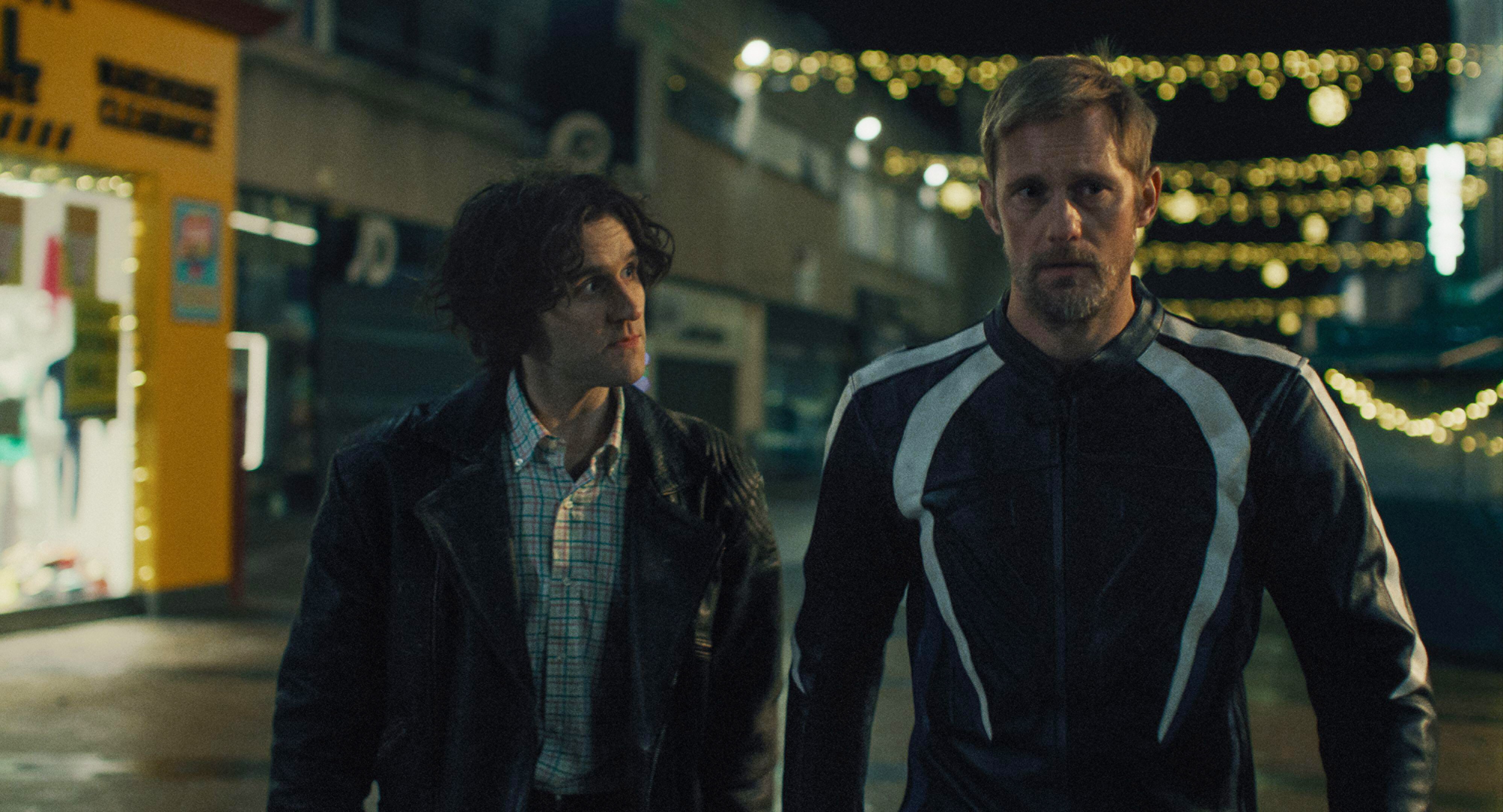 Child stars, Prince and nursery rhymes: It's the Country Life Quiz of the Day, December 5, 2025
Child stars, Prince and nursery rhymes: It's the Country Life Quiz of the Day, December 5, 2025It's all in today's quiz.
-
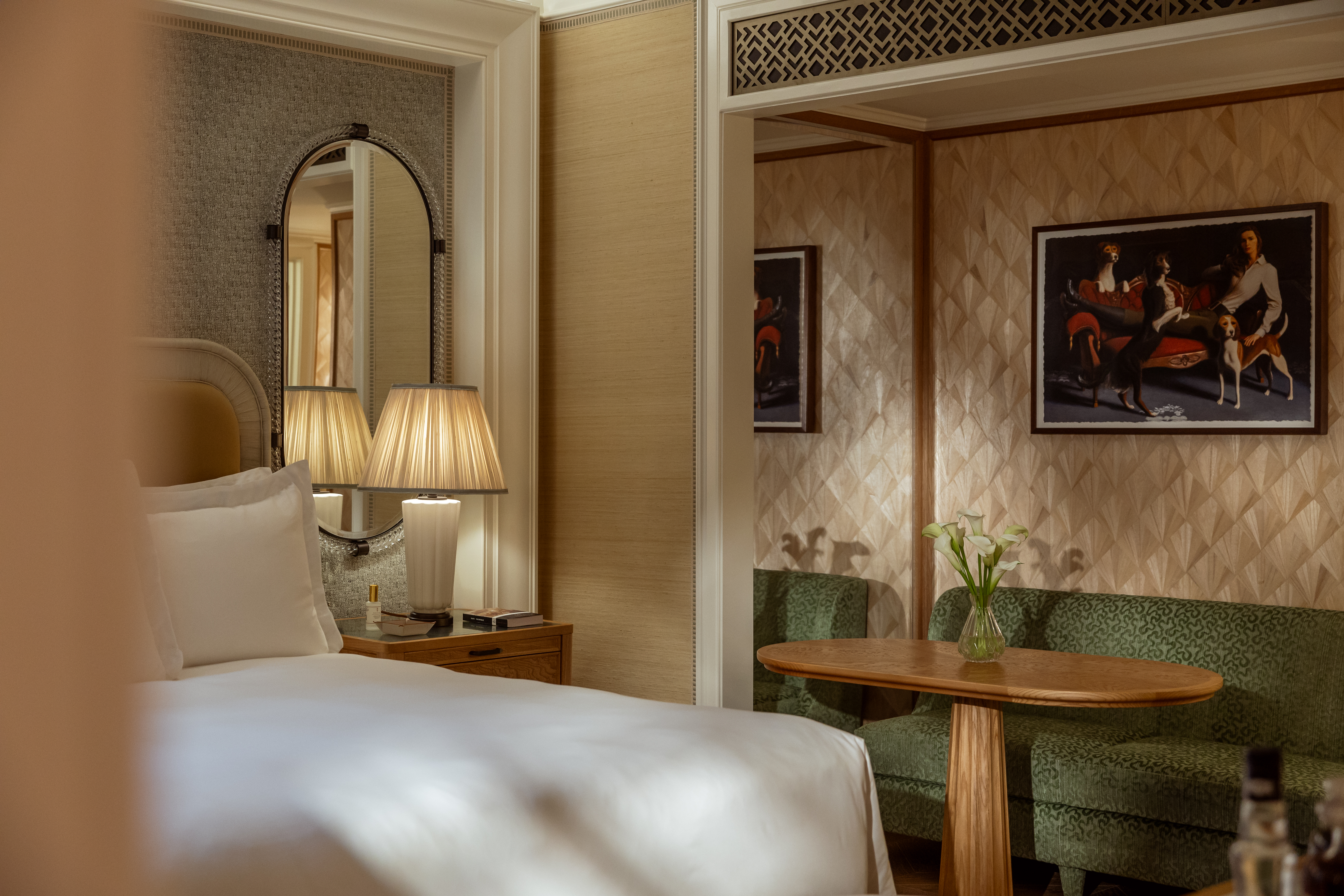 The Surrey hotel review: The new kid on New York's Upper East Side
The Surrey hotel review: The new kid on New York's Upper East SideRosie Paterson checks into The Surrey, A Corinthia Hotel, one year on from its grand opening.
-
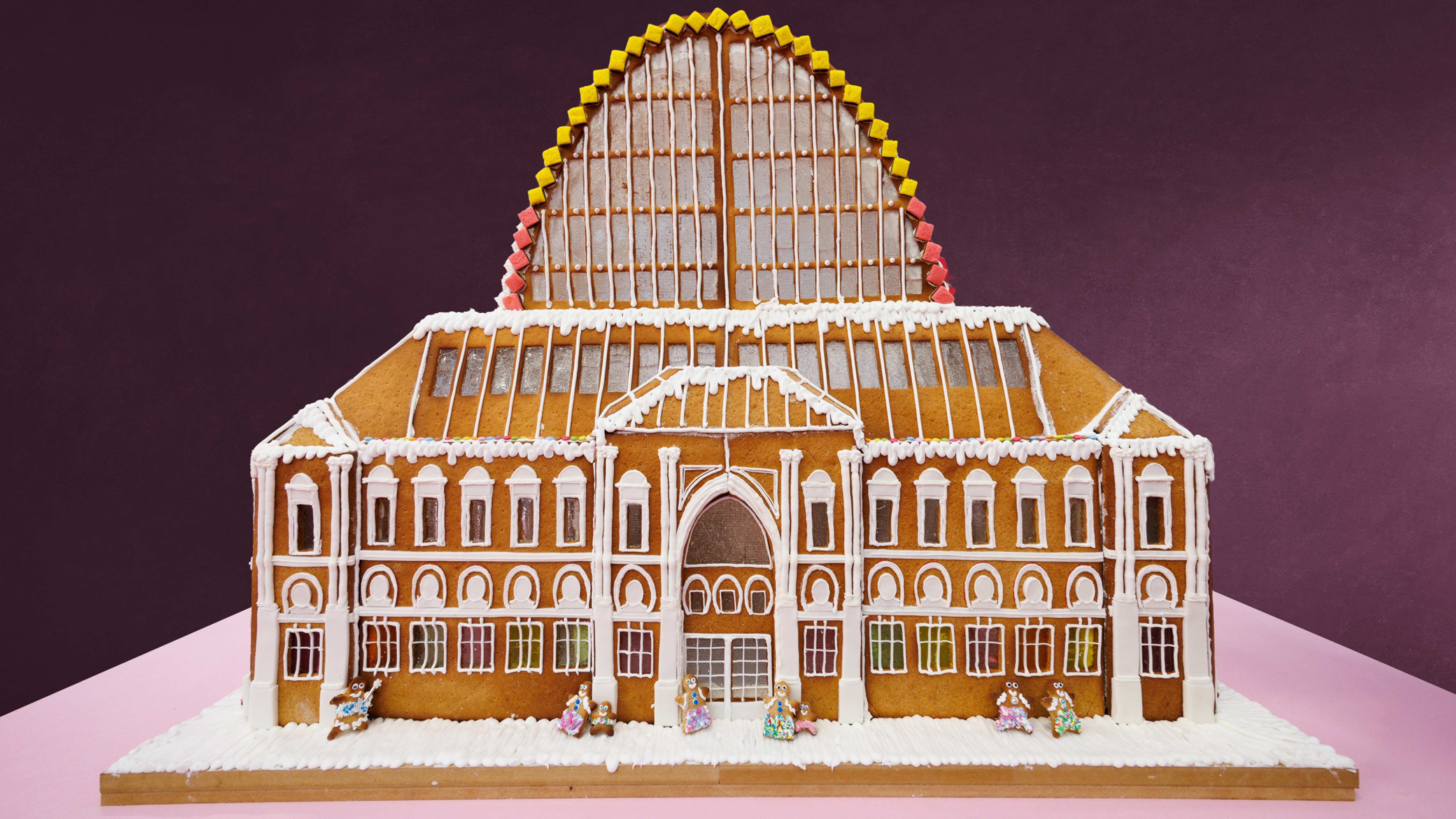 Sweet civilisation: What do you get when you ask architects to compete in a gingerbread competition?
Sweet civilisation: What do you get when you ask architects to compete in a gingerbread competition?The Gingerbread City is back in London’s Kings Cross. Lotte Brundle pays it a visit.
-
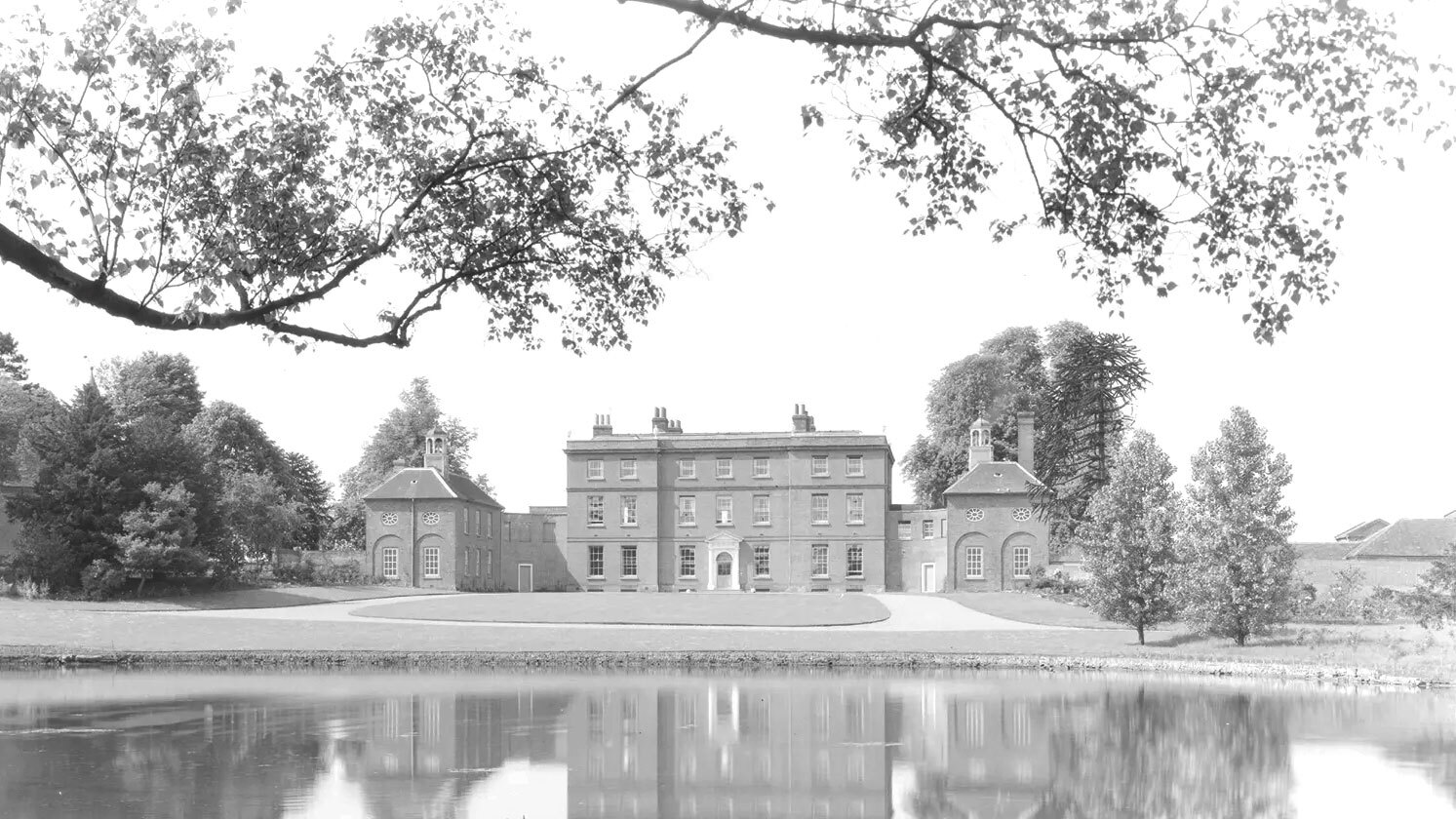 This Grade I Essex home was renovated by a Guinness and a notorious American diarist and photographed by Country Life — now it's a firm favourite with the fashion set
This Grade I Essex home was renovated by a Guinness and a notorious American diarist and photographed by Country Life — now it's a firm favourite with the fashion setKelvedon Hall was saved from demolition by Lady Honor Guinness and Henry 'Chips' Channon. Now it is the star of a Church's Christmas campaign.
-
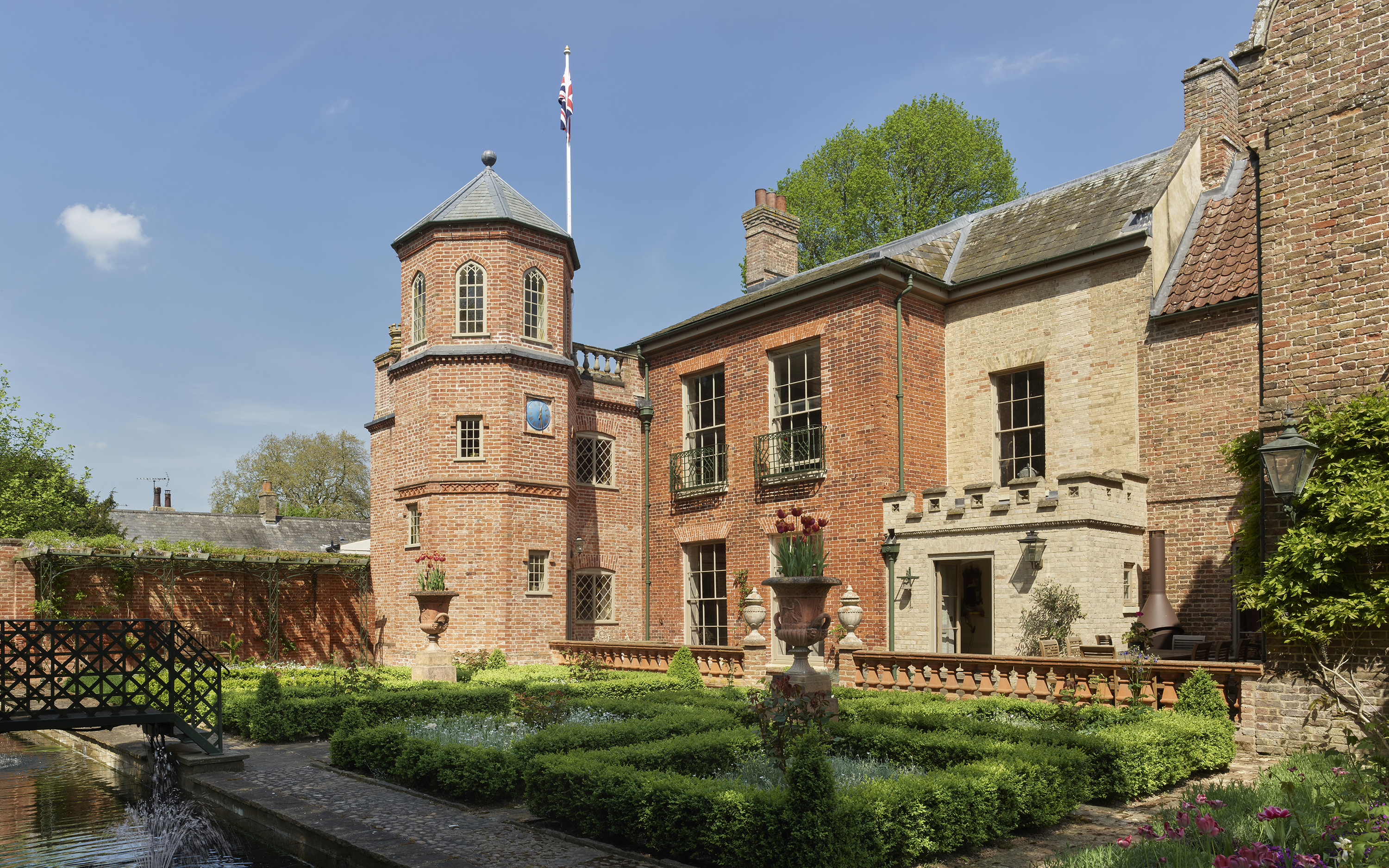 Northwold Manor: 'A place of delight once more after half a century of chaos and neglect'
Northwold Manor: 'A place of delight once more after half a century of chaos and neglect'A heroic restoration project has transformed Northwold Manor in Norfolk — home of Professor Warwick Rodwell and Ms Diane Gibbs — after more than 50 years of being left neglected. It has also illuminated its remarkable history, as John Goodall explains; photography by Paul Highnam for Country Life.
-
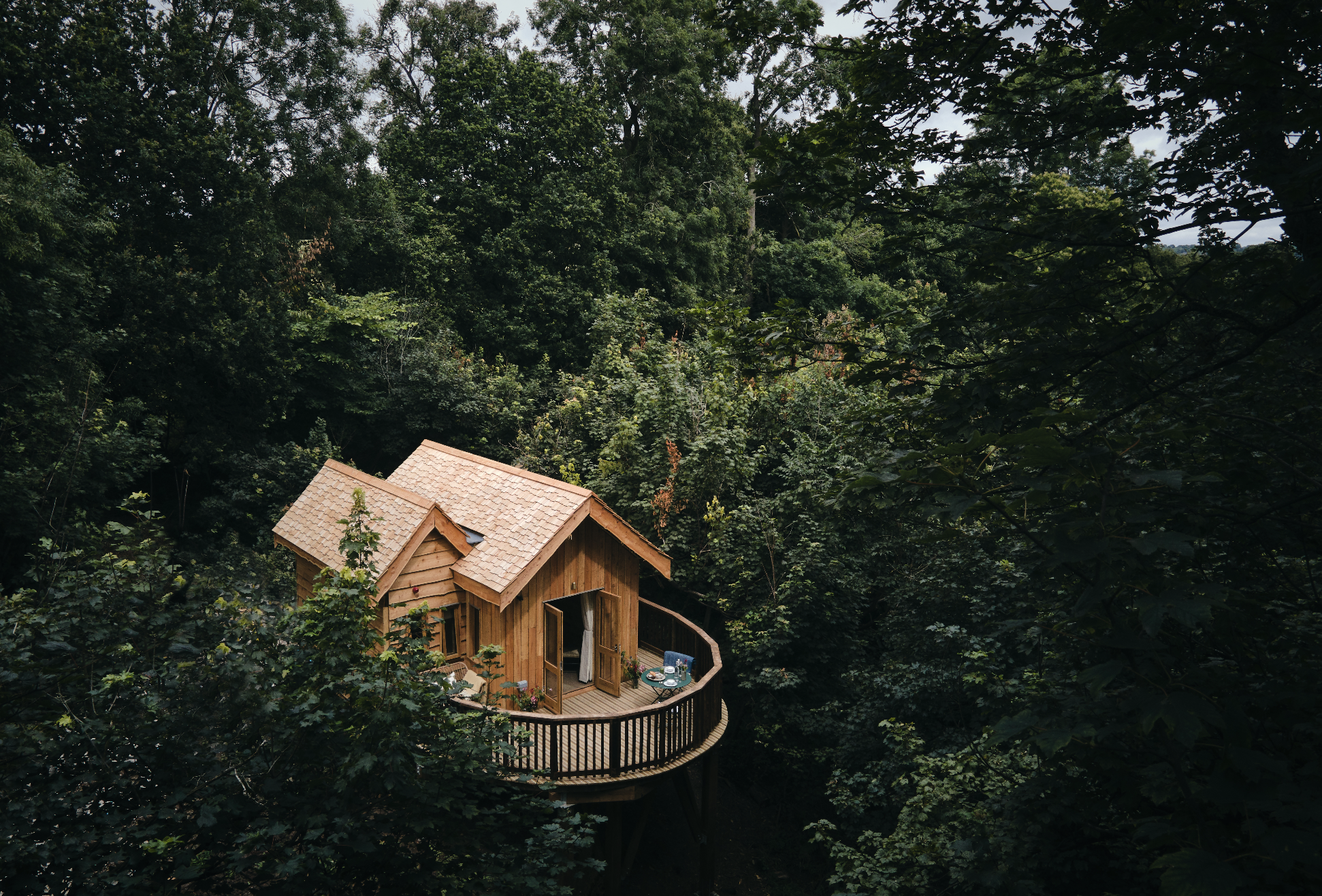 Wildhive Callow Hall hotel review: I felt like a squirrel preparing for hibernation and I loved it
Wildhive Callow Hall hotel review: I felt like a squirrel preparing for hibernation and I loved itThe boutique treehouses at this Derbyshire getaway are the best way to unwind in nature and explore the Peak District, writes Lotte Brundle.
-
 Ardbeg House review: Concept design is a tricky business, but this Scottish whisky distillery-turned-hotel proves that it can be done to great effect
Ardbeg House review: Concept design is a tricky business, but this Scottish whisky distillery-turned-hotel proves that it can be done to great effectSteven King checks in to Ardbeg House, a boutique hotel from the LVMH behemoth.
-
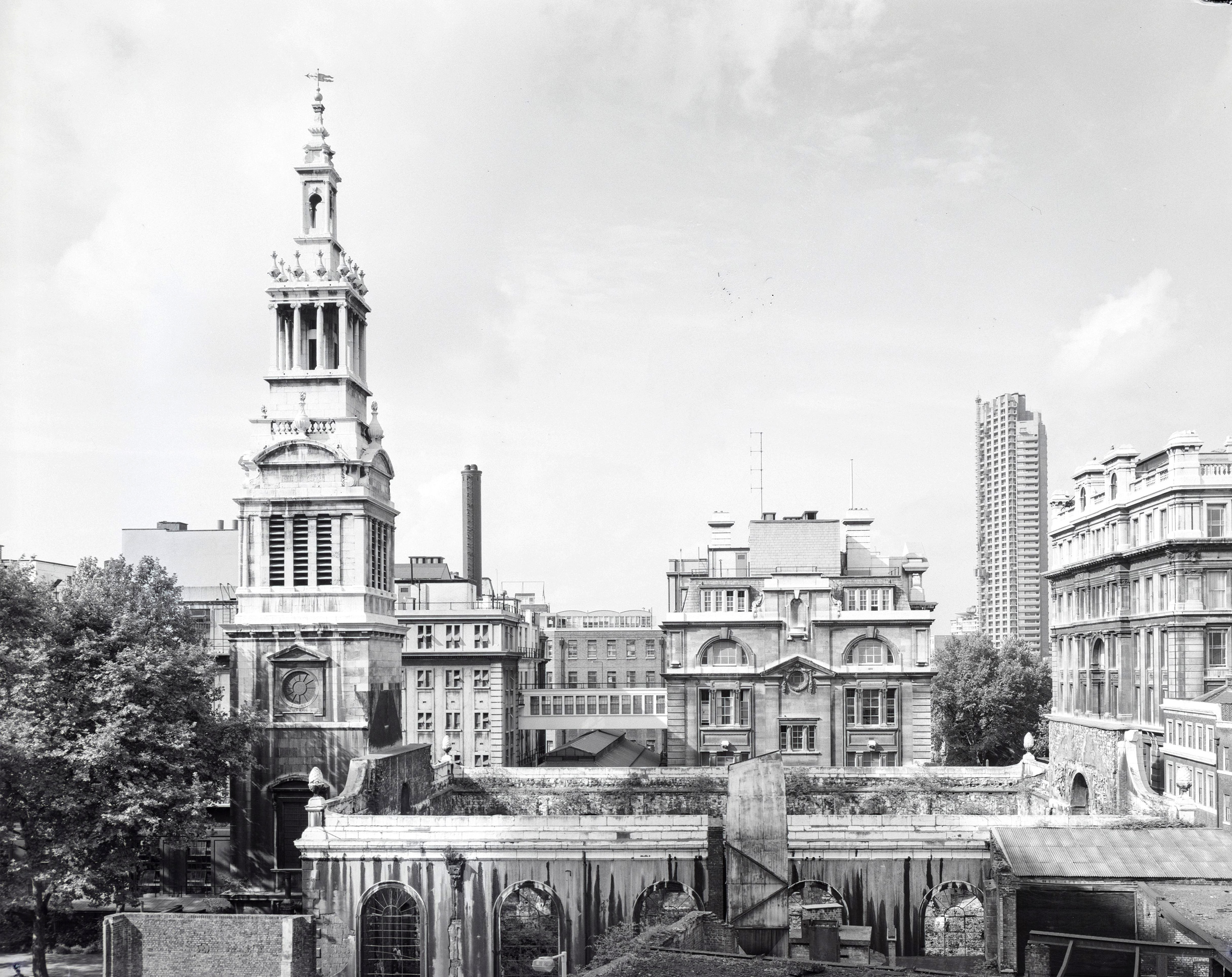 53 years ago, a Wren masterpiece was replaced with a glorified roundabout. We must not make the same mistake again
53 years ago, a Wren masterpiece was replaced with a glorified roundabout. We must not make the same mistake againThe plans to rid Christ Church Newgate Street of traffic should be cause for celebration — but a mistake as bad as the one made in the 1970s is about to happen, says Ptolemy Dean.
-
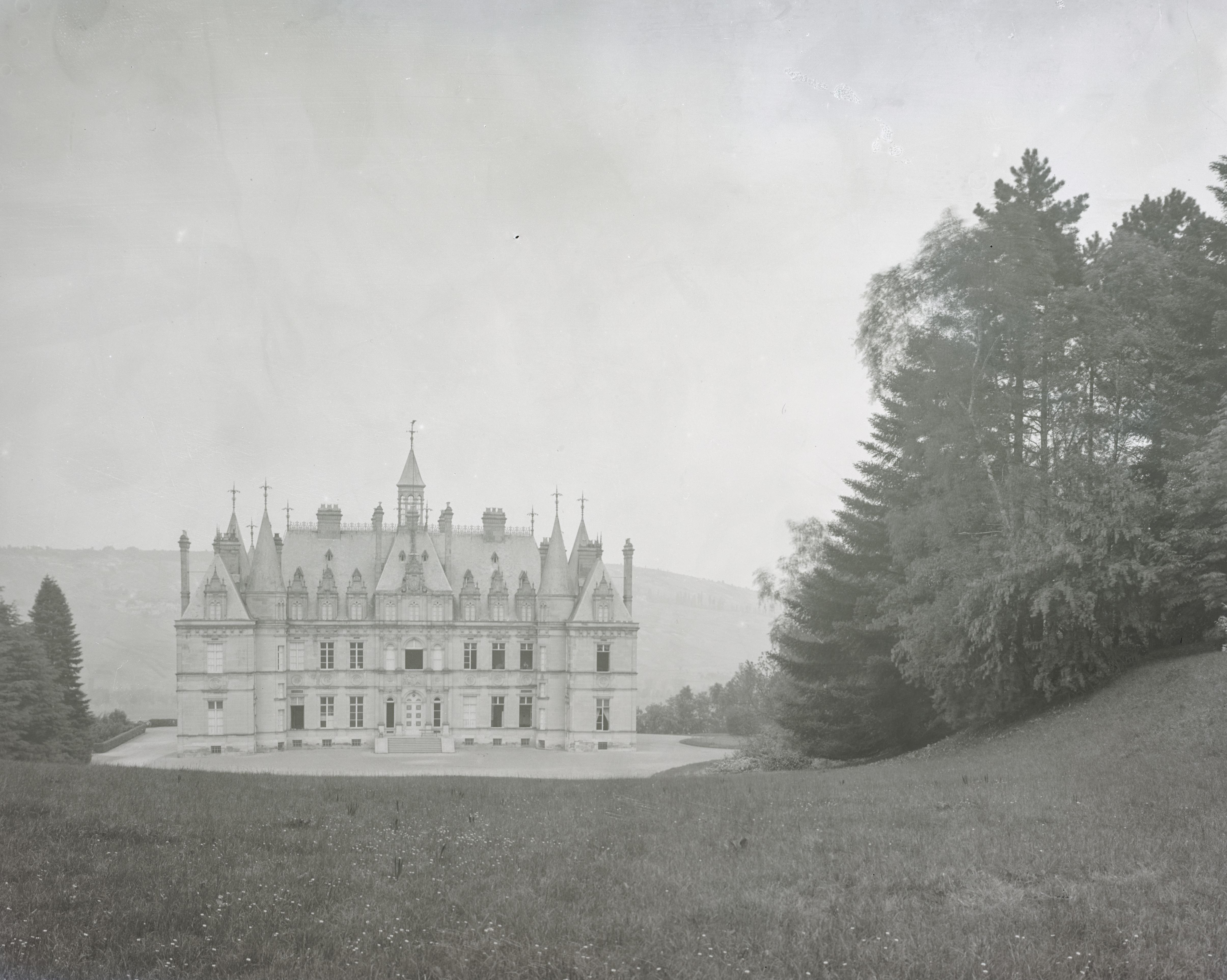 Ten of the most exquisite French châteaux, photographed for Country Life in 1906 and still standing today
Ten of the most exquisite French châteaux, photographed for Country Life in 1906 and still standing todayIn the early 20th century, Country Life commissioned Frederick H. Evans to photograph some of France's châteaux. Here are some of his efforts.

